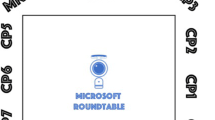Abstract
Purpose
The aim of this investigation was to test hypotheses about meeting design characteristics (punctuality, chairperson, etc.) in relation to attendees’ perceptions of meeting effectiveness.
Design/Methodology/Approach
Two studies were conducted: Study 1 investigated meetings attended in a typical week (N = 958), whereas Study 2 examined the last meeting attended on a particular day (N = 292).
Findings
A number of design characteristics (in particular agenda use and quality of facilities) were found to be important in predicting perceived effectiveness. Attendee involvement served as a key mediator variable in the observed relationships. Neither meeting type nor size was found to affect the relationships of the design characteristics and involvement with effectiveness. Meeting size, however, was negatively related to attendee involvement.
Implications
The findings help us to better understand relationships between design characteristics and attendees’ perceptions of meeting effectiveness. Meeting organizers can use the findings to guide administration of meetings, with potential to enhance the quality of meetings.
Originality/Value
Meetings are a common organizational activity but are rarely the focus of empirical research. The use of two complementary studies, to our knowledge, provides a unique account of the contribution of design characteristics to perceptions of meeting effectiveness.
Similar content being viewed by others
References
Baron, R. M., & Kenny, D. A. (1986). The moderator-mediator variable distinction in social psychological research: Conceptual, strategic, and statistical considerations. Journal of Personality and Social Psychology, 51, 1173–1182. doi:10.1037/0022-3514.51.6.1173.
Bennett, R. J. (1998). Perceived powerlessness as a cause of employee deviance. In R. W. Griffin, A. O’Leary-Kelly, & J. M. Collins (Eds.), Dysfunctional behavior in organizations: Violent and deviant behavior. Stamford, CT: JAI Press.
Campion, M. A., Papper, E. M., & Medsker, G. J. (1996). Relations between work team characteristics and effectiveness: A replication and extension. Personnel Psychology, 49, 429–452. doi:10.1111/j.1744-6570.1996.tb01806.x.
Carlozzi, C. L. (1999). Make your meetings count. Journal of Accountancy, 187, 53–55.
Hackman, J. R. (1987). The design of work teams. In J. Lorsch (Ed.), Handbook of organizational behavior (pp. 315–342). Englewood Cliffs, NJ: Prentice Hall.
Kieffer, J. R. (1988). The strategy of meetings. New York: Warner.
LaForce. (2004). Meeting time. www.team-creations.com.
Nixon, C. T., & Littlepage, G. E. (1992). Impact of meeting procedures on meeting effectiveness. Journal of Business and Psychology, 6, 361–369. doi:10.1007/BF01126771.
Rogelberg, S. G., Leach, D. J., Warr, P. B., & Burnfield, J. L. (2006). “Not another meeting!” Are meeting time demands related to employee well-being? The Journal of Applied Psychology, 91, 86–96. doi:10.1037/0021-9010.91.1.83.
Schwartzman, H. B. (1986). The meeting as a neglected social form in organizational studies. In B. M. Staw & L. L. Cummings (Eds.), Research in organizational behavior (pp. 233–258). Greenwich, CT: JAI Press.
Sisco, R. (1993). What to teach team leaders. Training (New York, N.Y.), 62–67.
Sobel, M. E. (1988). Direct and indirect effect in linear structural equation models. In J. S. Long (Ed.), Common problems/proper solutions: Avoiding error in quantitative research (pp. 46–64). Beverly Hills, CA: Sage.
Spector, P. E. (2006). Method variance in organizational research. Organizational Research Methods, 9, 221–232. doi:10.1177/1094428105284955.
Spencer, J., & Pruss, A. (1992). Managing your team: How to organise people for maximum results. London: Piatkus.
Svenson, O. (1981). Are we all less risky and more skilful than our fellow drivers? Acta Psychologica, 47, 143–148. doi:10.1016/0001-6918(81)90005-6.
Taylor, S. E., & Brown, J. D. (1988). Illusion and well-being: A social psychological perspective on mental health. Psychological Bulletin, 103, 193–210. doi:10.1037/0033-2909.103.2.193.
Tropman, J. E. (1996). Making meetings work. Thousand Oaks, CA: Sage.
Volkema, R. J., & Niederman, F. (1995). Organizational meetings: Formats and information requirements. Small Group Research, 26, 3–24. doi:10.1177/1046496495261001.
Waddell, W. C., & Rosko, T. A. (1993). Conducting an effective off-site meeting. Management Review (February), 40.
Author information
Authors and Affiliations
Corresponding author
Additional information
Received and reviewed by former editor, George Neuman.
Rights and permissions
About this article
Cite this article
Leach, D.J., Rogelberg, S.G., Warr, P.B. et al. Perceived Meeting Effectiveness: The Role of Design Characteristics. J Bus Psychol 24, 65–76 (2009). https://doi.org/10.1007/s10869-009-9092-6
Published:
Issue Date:
DOI: https://doi.org/10.1007/s10869-009-9092-6




